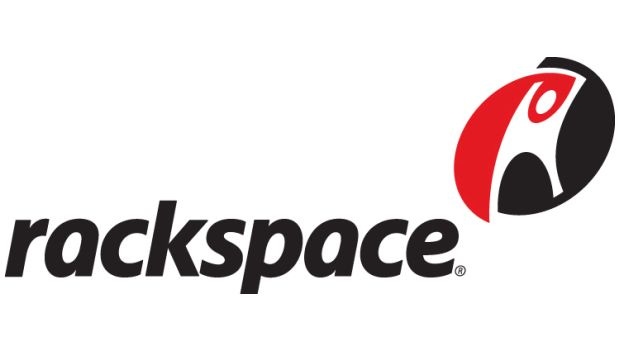As an OpenStack founder, Rackspace wants to be the source for managed private clouds.
May 15, 2017

 Rackspace took home Innovator of the Year honors at the Red Hat Summit earlier this month and continued its open-source push with some announcements at last week’s OpenStack Summit, both held in Boston.
Rackspace took home Innovator of the Year honors at the Red Hat Summit earlier this month and continued its open-source push with some announcements at last week’s OpenStack Summit, both held in Boston.
Channel Partners sat down with John Engates, Rackspace’s chief technology officer, and Bryan Thompson, general manager for the Rackspace OpenStack Private Cloud, to discuss partner reception of the company’s managed OpenStack as a service offering, the resurgence in private cloud, a new hardware deal with Dell EMC and the outlook for open source for enterprise customers.
 Along with NASA, Rackspace invented OpenStack in 2010. Today it has the industry’s largest OpenStack cloud and more than one billion hours of OpenStack server experience. Since it turned the project over to the open source community, the stack has seen phenomenal growth, and not just in hyperscale data centers: The April 2017 OpenStack user survey, spanning more than 1,300 companies in 78 countries, showed 32 percent of respondents have 10,000 employees or more, while 25 percent have fewer than 100. And once a customer adopts OpenStack, they tend to expand. The median user runs 61 percent to 80 percent of its infrastructure on OpenStack; among users with clouds of 1,000 cores or more, the median user runs 81 percent to 100 percent of the overall infrastructure on OpenStack. Two thirds are production workloads
Along with NASA, Rackspace invented OpenStack in 2010. Today it has the industry’s largest OpenStack cloud and more than one billion hours of OpenStack server experience. Since it turned the project over to the open source community, the stack has seen phenomenal growth, and not just in hyperscale data centers: The April 2017 OpenStack user survey, spanning more than 1,300 companies in 78 countries, showed 32 percent of respondents have 10,000 employees or more, while 25 percent have fewer than 100. And once a customer adopts OpenStack, they tend to expand. The median user runs 61 percent to 80 percent of its infrastructure on OpenStack; among users with clouds of 1,000 cores or more, the median user runs 81 percent to 100 percent of the overall infrastructure on OpenStack. Two thirds are production workloads
Among Rackspace announcements at the events were a deal to deliver OpenStack private clouds as a service running on Dell EMC compute and storage hardware. Customers may also choose gear from HPE or the Open Compute Project.
Rackspace also recently announced an expansion of its professional services to support customers looking to move workloads into AWS. That follows being named the first managed services support partner for Google Cloud Platform.{ad}
 The company’s Rackspace Private Cloud powered by Red Hat offering, in which resellers can deliver OpenStack private clouds in a managed, as-a-service model, gained new support options in March. Customers can choose to stay current on all new releases of OpenStack or select an every-third-release update cycle. Thompson stresses that Rackspace is not competing with the commercial Red Hat distribution; rather, it’s providing “Day 2″ operations and has found that partners are being very successful selling the Red Hat OpenStack platform paired with that ongoing support.
The company’s Rackspace Private Cloud powered by Red Hat offering, in which resellers can deliver OpenStack private clouds in a managed, as-a-service model, gained new support options in March. Customers can choose to stay current on all new releases of OpenStack or select an every-third-release update cycle. Thompson stresses that Rackspace is not competing with the commercial Red Hat distribution; rather, it’s providing “Day 2″ operations and has found that partners are being very successful selling the Red Hat OpenStack platform paired with that ongoing support.
“We invented OpenStack; we created the ecosystem,” said Engates. “While it took some time to figure out the right model, once we did, we put all of our fuel behind that model, and now the whole ecosystem is coming around to that way of thinking.”
Channel Partners: Congratulations on being voted Innovator of the Year.
Bryan Thompson: It’s been a good couple day run for us. It’s been exciting.
CP: What you’re saying at these events is, there’s a technical case and a business case for consuming OpenStack as a managed service vs. running it in house.
BT: Yes, we see huge demand from enterprises that are looking to …
{vpipagebreak}
… consume it as a service, whether we’re hosting it or it’s in their data center, but having it delivered as a remotely managed platform. Cloud is still very complex – OpenStack is still very complex – and it’s not just about installing it, it’s those Day 2 operations. We’re seeing huge value in being able to deliver that as a service so they can focus their resources on innovation on top of that platform.
John Engates: When we started OpenStack, we assumed that we would roll out a group of consultants, go do the work and get it installed, back away and come back in only when the customer needed us. But we learned pretty quickly in those early deployments that every single one of them was different — we call them snowflakes. Every customer thought they knew what they wanted.
But in reality, while they would all be coming at it from different perspectives, ultimately they wanted the same thing — a cloud they could use. But they assumed that they had to bring all these requirements and all these expectations, just like they had done previously with enterprise software.{ad}
CP: The point of a cloud is to minimize snowflakes.
JE: Truth is, we found out pretty quickly the more of those snowflakes we deployed, the harder it was to keep them all moving forward in the OpenStack ecosystem. We were getting to the point where some weren’t upgradeable because they were too far behind, or they were too tightly integrated back to other systems in the company, or they were just so unique that they just weren’t in line with the community.
That’s what led us pretty early on to put a line in the sand and say, ‘We’re not going to do snowflakes anymore, we’re going to do these very systematized, automated deployments, they’re going to all look pretty much the same, they’re all going to be managed by Rackspace, there’s no walking away from it, we’re going to be hands-on forever.’
CP: Both on premises and in your data center?
JE: We jumped at the opportunity to do them both in customer premises and in our hosted data center. I mean, it was obvious we were going to do it in a Rackspace data center, but we were also seeing pretty early on that customers wanted something in their facilities, so we said, ‘Let’s just leverage what we know about managing our public cloud, let’s leverage the work that we’ve done on these initial, successful private clouds, and let’s just systematize that and put it into an option where customers can consume it wherever they want.’
I mean, it’s news out there on the floor, it’s news up on the stage, but it’s something Rackspace has been doing for four-plus years now, almost five.
CP: Do you and your resellers run into hardware issues, where you come in and say, ‘What do you have here?’
BT: Yeah, especially where they’re …
{vpipagebreak}
… remotely managed, that becomes the challenge: How much different gear can you test and certify?
Part of the value of OpenStack is being a bit abstracted. We rely on the underlying hardware operating systems themselves and their certification paths. So be it a Red Hat Linux enterprise-certified device or an Ubuntu-certified device, in most cases, as long as it meets one of those two hardware compatibility lists, we’re able to support it.
We are very opinionated from a reference architecture in how we configure networking, but we’re able to support a large swath of devices.
CP: For a partner that can recommend hardware, do you issue guidance?
BT: We have our OpenStack Everywhere solution, where we have prescribed building materials that we can roll in from HPE or, as we announced earlier and moving forward, we have a full Dell EMC stack that we can provide. For customers that are looking for guidance, these are fully testified, certified stacks that we stand behind.{ad}
CP: How is your channel responding to the OpenStack managed service?
BT: They can all resell hardware or subscriptions, but it’s that Day 2 that continues to be the real challenge for customers. Having a matched service offering that they can provide removes a lot of that complexity. That’s why there’s a lot of traction behind this with the Dell team. They’re excited about it.
JE: We’re involved in almost every opportunity; we’re pulled in pretty quickly when a partner comes to the table with a customer. It’s very much a sell-with engagement, in many cases.
CP: Do you see customers moving workloads between an OpenStack private cloud and any of the public clouds?
BT: It depends. Azure and Google Compute and AWS each have their own proprietary components. So customers will run an on-premises or hosted private cloud for certain workloads, but they may have defined it using SaltStack or Ansible or another orchestration tool. And they can use that same tooling and deploy [to a public cloud] with some environment tweaks.
For example, I can leverage AWS as the front end for certain things and call back over VPN into my core back-office systems in a private cloud.
For almost all of our customers – and I think this is just the reality we live in – it’s a multi-cloud world with a multivendor strategy.
JE: These [clouds] aren’t treated as interchangeable, generic pools of computing. They are usually built for a purpose, to solve a specific need within the company. Certain workloads are targeted, they have other groups within the company using public cloud for a variety of other things, so that tends to be how multi-cloud plays out in reality. One company may be using four or five clouds, but they’re using them for …
{vpipagebreak}
… different purposes, and oftentimes they have different requirements and goals in mind.
They aren’t concerned about moving things back and forth. At one point, the academic thought was cloud as literally a generic pool of computing. Well, people don’t do that. There’s no reason to move things that frequently or that arbitrarily. People build a platform, they layer things in on top, and then they don’t want to touch it if they don’t have to. And if they’re going to touch it, they want to do it with an automated toolset. They don’t want to do it by hand anymore.
Multi-cloud is also slightly different than hybrid in the sense that some customers are using it as a multivendor strategy, where I can have a little bit of this and a little bit of that and make sure I keep all my vendors honest and that nobody is gouging me on price. Maybe I won’t be moving workloads between them, but at least I’ll have benchmark workloads on each side a way to keep them all honest.{ad}
CP:Speaking of price, several companies here say they’ve seen around 70 percent cost savings by moving back from public into private. Should partners be advising customers to run the numbers?
BT: Absolutely. Maybe you have crazy swings of bursty workloads, in which case renting those spikes is more cost-effective. But at most organizations, a large percentage of their business units have persistent workloads, so you’re running at that consistent utilization. In a private cloud you can get much better economics.
JE: You’re paying a premium, to some extent, for all that flexibility. In the public cloud, you’ve got a lot of elasticity that allows you to do a lot of things up and down. But a lot of companies don’t need to go up and down to that extreme. That’s why Amazon’s had committed rates where you could pay in advance for reserved instances. Basically, you’d buy a lot of capacity ahead, and then you’d pay down your hourly fees.
I think private cloud is sort of the ultimate way to pay down your hourly fee: You just own the gear.
And for some companies, there are incentives to use capital dollars instead of operational expenditure dollars. We’re owned now by a private equity firm, and what I’ve learned meeting with lots of private equity portfolio companies is that they’re judged sometimes on EBITDA [earnings before interest, taxes, depreciation and amortization] and sometimes the EBITDA leans in the favor of using capital dollars instead of spending those operational dollars.
Sometimes there are just funky incentives inside of companies that push them toward just having their own gear and their own private clouds.
At a certain scale, it certainly makes sense.
CP:How do you see the value proposition of open source for your channel?
JE: I’ve been at Rackspace for 17 years, and we’ve been big proponents of open source all the way through from the early days of Linux and creating OpenStack. Open source just keeps reinventing itself in …
{vpipagebreak}
… newer and better ways, and it just keeps growing into these enterprises.
Back then in the old days it was hard to convince a big enterprise to use Linux, it was like we were pushing a rock up the hill.
CP:People were sneaking the mail server onto it.
JE: Absolutely. Some Linux engineer would be working on it at home and bring it in. And now you’ve got enterprises on stage saying ‘Look what we built, look what we did, look what we’ve done.’ That’s just a testament to what open source is capable of.
Big companies like Google and Facebook and Amazon — there’s a litany — have proven that there’s nothing better out there at the scale. When you get to that point, there’s just no way to make the economics work if you’re going to pay big bucks for every license.{ad}
BT: Then there’s the innovation that comes from a global community as opposed to one vendor.
JE: That’s what I love about OpenStack. I mean, we’ve gone to these summits around the world and you hear different viewpoints from Asia, from companies in China that are building their massive-scale public and private clouds. And then the telcos have come into the picture in a big way.
It all really just makes the product stronger and better and allows innovation to happen in a distributed manner rather than expecting one company, one vision, to drive it all.
This is one of those things where the power of the people seems to work.
CP:Should MSPs or customers worry about the ‘embrace and extend’ phenomenon, where a vendor takes an open platform and then packs in proprietary stuff?
BT: It goes back to the snowflake thing. I think there are enough vendors that realize that the minute I do that, I’ve now forked this platform and I won’t be able to keep up with the community — and then I own costs to maintain that.
JE: A lot of those have fallen out of OpenStack community. If you look at the names that are no longer here, they’re the ones that took it in the wrong direction. From the very beginning we told ourselves we were going to stay as pure and as true to the community version as we possibly could, and to this day that’s the mantra internally at Rackspace.
Follow editor in chief @LornaGarey on Twitter.
Read more about:
AgentsAbout the Author(s)
You May Also Like


